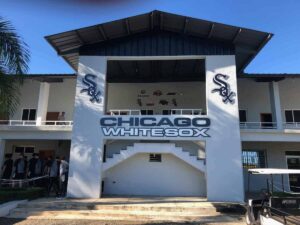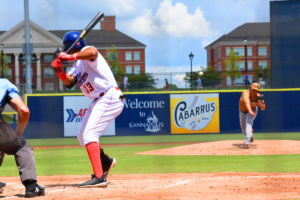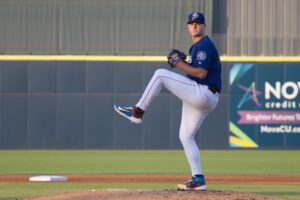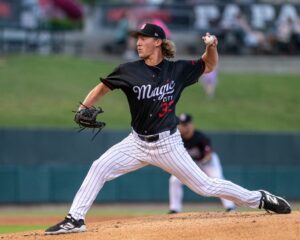2023 Birmingham Barons Season Review
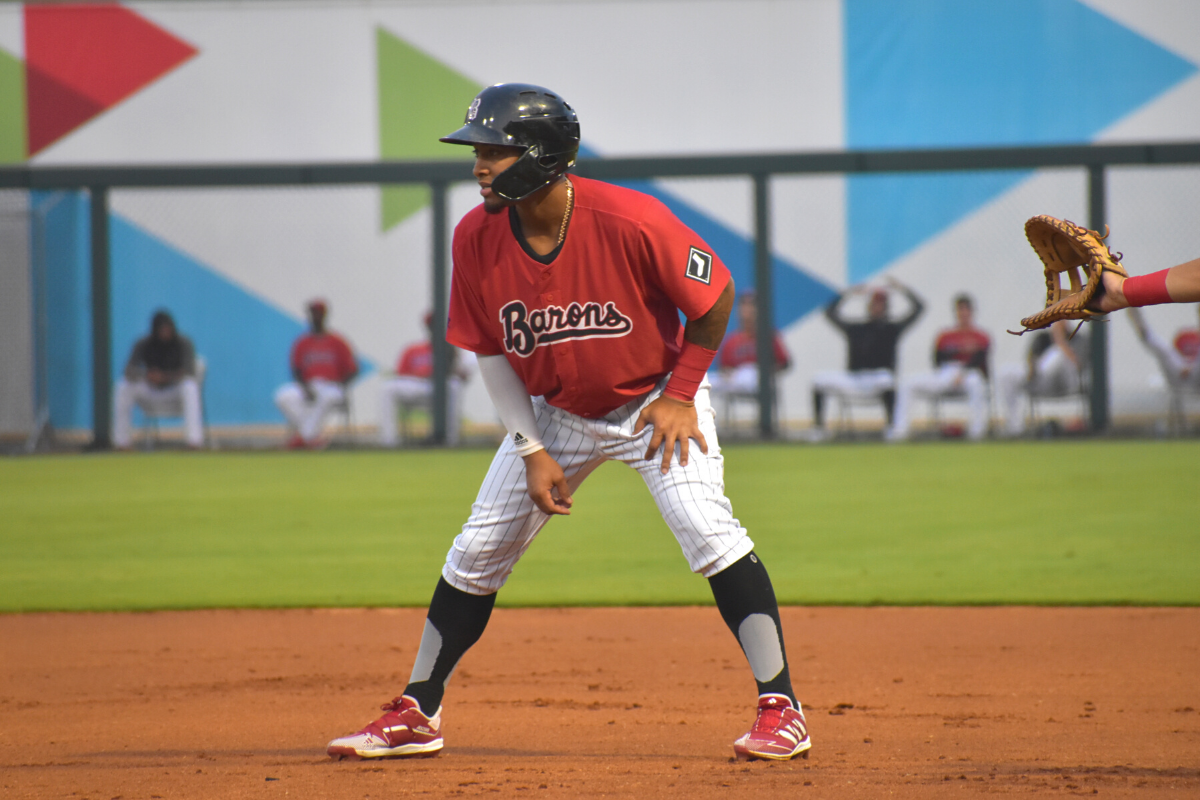
Photo courtesy: Caleb Probst/FutureSox
The White Sox farm system has vastly improved in the past year, but that didn’t quite show with the results on the field at the upper levels. The Barons started the season with a rather incomplete roster that featured few prospects with any substantive intrigue but finished with easily the most exciting roster in the system.
The improvement in talent did not show with team success as the Barons finished the first half with a league-worst 25-44 record and the second half with a 26-43 mark, still the worst in the International League. The team as a whole failed to put together consistent patterns of winning but plenty of notable players proved their upside this season while playing in Birmingham.
The offense shifted a lot throughout the year with stars such as Colson Montgomery and Bryan Ramos being injured to start the season and new additions joining the team via trade acquisitions (Edgar Quero) or internal promotions (Wilfred Veras, Tim Elko, Terrell Tatum). Despite adding a lot of talent down the stretch, the Barons offense was toward the bottom of the International League in most metrics. Here’s how the team stacks up against the eight teams in their Double-A league.
| Hitters | AVG/OBP/SLG/OPS | HR | Runs | BB:SO | SB |
| Birmingham | .238/.326/.374/.700 (7th of 8 teams) | 135 (7th) | 638 (7th) | 538:1284 (6th/6th) | 129 (8th) |
Earlier in the season, Jose Rodriguez was one of the only players playing at an above-average level, but that fortunately changed with time. I’ll get into some of the players who performed well in a bit, but let’s look at the pitching staff for now.
The pitching was possibly even worse than the hitting for much of the season aside from Cristian Mena, who finished his season with Triple-A Charlotte. The rotation added four new members for the last month and a half as Nick Nastrini (also finished the year in Charlotte), Jake Eder, and Ky Bush were acquired via deadline deals and Jonathan Cannon ascended through the system after being drafted just last year. While all of those pitchers outside of Nastrini struggled, the staff was much more intriguing late in the year.
This is where the Birmingham pitching staff stacked up compared to the other seven International League teams. For many pitching statistics, the 1st ranking in something like runs is not a good thing like it would be with hitting.
| Pitchers | ERA | Runs Allowed | HR Allowed | BB/SO | WHIP |
| Birmingham | 5.62 (8th) | 856 (1st) | 157 (4th) | 719:1297 (1st/5th) | 1.60 (8th) |
As you can see, it wasn’t pretty on the defensive side either this season for Birmingham. Allowing the most runs and walks is never a path to success at any level of baseball and it certainly wasn’t for the Barons.
These team-wide statistics are far from awe-inspiring but I think there is much more to be excited about when you look further into the specific performances of many of the players that didn’t get to spend too much of the season with the Barons. but impressed in a limited time. Let’s look into specific players who showed signs of improvement while in Double-A and could become contributors for the White Sox in the near future.
Position Players
Jose Rodriguez: As one of the staples at the top of the lineup for the Barons this season, Rodriguez continued to show signs of premium athleticism as he was even briefly called up to the White Sox and finished his season in Charlotte. Following a season in which he spent the whole year in Birmingham with a .770 OPS in 2022, Rodriguez started slow alongside the rest of the roster but saw his production and power increase later as he finished with a .747 OPS, 18 home runs, and 28 stolen bases in his 87 Double-A games this season.
The biggest concern when watching him this season was the uptick in strikeouts as his strikeout rate rose nearly 10% to 23.5% this season compared to just a 4.5% walk rate. He’s a power-over-contact infielder at this point, but his plus speed and natural pop continue to make him a player that could factor into the MLB roster next year.
Bryan Ramos: After a breakout season last year, Ramos began the year on the injured list but quickly picked up where he left off once he returned and settled back into his rhythm. He produced the exact same wRC+ of 122 this season as he did last season in High-A which proves his ability to succeed at the next level. He played in 77 games with Birmingham but finished the year with a .826 OPS along with 14 home runs. While his strikeout rate elevated marginally to a 21.9% clip, his walk rate to 11.1% which is a great sign of his maturing plate approach.
Another important step for Ramos this season was his defensive improvement at third base. He was always physically capable at the position but has taken a step forward in becoming an above-average defender with improved range and great arm strength at the hot corner. He’s in a position to be the next White Sox third baseman in the post-Moncada era and there’s a chance he reaches Chicago late next season if he remains consistent or improves further next season.
Colson Montgomery: The other player who was supposed to anchor the lineup all year with Ramos and Rodriguez is the White Sox top prospect. Montgomery missed the first two full months of the season and spent nearly 30 games dominating his rehab assignments in the Complex League and High-A. He returned to Birmingham at the beginning of August and started a bit slow. He didn’t show a lot with the bat immediately but his elite approach led to a still rather high on-base percentage. He settled in though and finished the year with a .244/.400/.427 slash line that resulted in a 129 wRC+ in 37 games.
Montgomery’s season was injury-riddled and his power didn’t quite get the chance to shine as he was fighting to get into a rhythm until the end of the year. However, Montgomery’s discipline and the way he approaches everything at the plate is well beyond his years and bodes well for his time in the Arizona Fall League this October. He’ll get a chance to get more at-bats against some of the best prospects in baseball as he looks toward a hopefully healthy 2024 season.
Wilfred Veras: One of the biggest breakouts in the system this year might still be underrated given the season that Veras just put together. After a solid first two-thirds of the season in Winston-Salem that was similar to his 2022 performance, the 20-year-old took his game to another level to finish the year with Birmingham. Veras posted a 102 wRC+ with 11 home runs and 63 RBI across 92 games in High-A but finished with a 129 wRC+ and six home runs in his 38 games played with the Barons.
With limited defensive ability coming into the year, Veras worked hard in right field and has shown noticeable improvement as a corner outfielder this year. The biggest concern with him is still a 27.2% strikeout rate with minimal walks to balance it out. He was a doubles machine all year with 14 in Birmingham and 39 on the year which showed off his natural gap-to-gap power that will continue to show at the next level. At just 20 years old, Veras is a rather exciting hitter who should start the year in the heart of the Barons lineup in 2024.
Edgar Quero: The biggest acquisition of the trade deadline was none other than the likely catcher of the future for the organization. Quero was brought in from the Angels in the Lucas Giolito trade as a 20-year-old catcher who already had Double-A experience. His numbers ticked down to start the year after skipping High-A entirely, but he impressed a lot during his time with Birmingham. He slowed down at the end of the year but finished with a .759 OPS while displaying a terrific approach, especially for a catcher of his age. His walk rate actually dropped since the trade but was still 12.7% with only a 17.2% strikeout rate.
Quero’s defense is a work in progress but he’s getting better and his arm strength is elite behind the plate. His framing has looked better to me as of late and he’s still very young for the level. He should begin with the Barons next year but could be someone that rises to Triple-A in 2024.
Xavier Fernandez: One of the few early-season Barons players who deserves some recognition for his season was the starting catcher for the first half and spent the second half of the year in Charlotte. Fernandez, better known as “X”, had a .865 OPS during his time with the Barons and was even better with a .945 mark in Charlotte. He’s already 28 years old but doesn’t strike out much and has power upside for a catcher. With Yasmani Grandal and Seby Zavala likely on their way out, Fernandez could find his way in Chicago during the latter part of the 2024 season.
Tim Elko: Arguably the minor league hitter of the year for the White Sox, Elko climbed three levels after being drafted in the 10th round last year as he finished the season in Birmingham. He mashed his way through Low-A and High-A and finished the season with 28 home runs and 106 RBI between the three levels. After starting hot in Birmingham, Elko slumped at the end of the season finishing with just a 87 wRC+ in his 34 games. The concern with Elko remains his swing-and-miss concerns which resulted in a 35.8% strikeout rate in Double-A. But his raw strength is undeniable and his feel to hit was much better than most expected this season with a .295 average in his first professional year.
Pitchers
Cristian Mena: The underlying numbers don’t do justice to the year that 20-year-old Cristian Mena just put together while spending almost the whole season in Birmingham before heading to Charlotte a few weeks ago. Mena has shown immense potential with stuff that played well all season in Double-A despite some command issues that resulted in allowing too many home runs. Mena finished with a 4.66 ERA in Double-A, but his strikeouts per nin of 10.74 is excellent for the level and his development of an effective slider bodes well for his future.
Mena is one of the highest-upside arms in the system and reaching Triple-A at the end of his age-20 year is a great sign for the future. He was one of the few players on the roster in Birmingham with a positive win-loss record and could make a push toward making the White Sox roster late next season at just 21 years old if his command can improve a little more next season. Mena will look to add more ride and increased velocity to his fastball as he grows physically next season as well.
Nick Nastrini: The headliner of the package that sent Lance Lynn and Joe Kelly to the Dodgers was a right-hander who should be in Chicago very soon. Nick Nastrini proved since the trade that he’s an advanced arm with clean mechanics and stuff that can generate ample whiff. His fastball is more advanced than Mena’s right now but his command drifts often and results in some entirely non-competitive pitches. Nastrini’s swing strike rate was one of the best in the minor leagues this year alongside Mena and his arsanel provides a lot of upside.
At his age, Nastrini could possibly even break camp with the White Sox next year but if he doesn’t it won’t be long until he’s joining the rotation. The only thing in his way is his command that needs more refinement. This acquisition was a great one by the organization as he’s on track to be a key piece of the rotation soon.
Matthew Thompson: It hasn’t been the smoothest ride for the former high school draft pick. Thompson has had plenty of ups and downs and his development was definitely has been disrupted at many junctures. His command was rough this season with over six walks per nine innings but his breaking ball is still a plus pitch. I’m curious to see if Thompson ends up moving to a bullpen role in the near future, but he is still just 22 years old since he was drafted out of high school. He strung together three straight starts with only one run allowed in each and 17 strikeouts combined at the end of August which can hopefully get him going the right direction heading into next year.
Jake Eder: In 2021, Jake Eder was one of the best left-handed arms in the minor leagues with a quick path to reaching the MLB level. He ended up needing Tommy John Surgery which set him back a while prior to his return this season. He showed a lot of promise in a limited sample with the Marlins before being sent to the White Sox in the Jake Burger trade. The focus for Eder this year was getting his body right and his mechanics back on track. His games with the White Sox went poorly, but Eder’s upside is up there with the best of the pitchers in the system. His slider projects as a plus pitch and his fastball can be great at times and should continue to grow. Eder will use the entire offseason to work on his body and mechanics as he prepares for what will be a huge 2024 season for his development.

